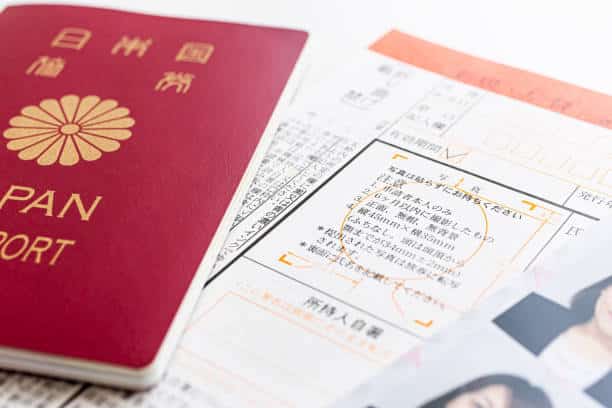How to Get Certified Farsi to English NAATI Translations for Accurate and Official Document Use
Certified Farsi to English translations are essential for individuals who need official documentation for visas, citizenship, education, legal proceedings, and other government procedures in Australia. With strict requirements from Australian authorities, NAATI certification ensures quality, accuracy, and regulatory compliance. Immi Translating Service provides NAATI-certified Farsi to English translation services that help applicants meet these requirements efficiently and affordably. This article explains what NAATI is, why its certification is crucial, which documents require certified translations, the translation process, how to verify translators, and other key information. By following these guidelines, applicants can ensure their translations are accepted by government bodies and other official institutions.
The sections below cover what NAATI certification involves, the range of relevant documents, the translation process, finding certified translators, the benefits of these services, common questions, and tips on preparing documents in farsi to english translation.
With this foundation set, the article now explores the key topics using the exact headings provided.
What Is NAATI and Why Is NAATI Certification Important for Farsi to English Translations?
NAATI, the National Accreditation Authority for Translators and Interpreters, certifies translators to ensure that Farsi to English translations meet high standards of accuracy and professionalism. This certification is recognized by government bodies and provides trust that the translation adheres to strict guidelines and best practices, including proper grammar.
What Does NAATI Certification Mean for Translators and Clients?
NAATI certification confirms that translators have passed rigorous assessments of their linguistic skills and cultural understanding. For clients, a NAATI-certified translation means the document is more likely to be accepted by Australian authorities, as it ensures the nuances of Persian language are preserved in English. This is especially important for sensitive documents such as immigration forms, legal contracts, and academic credentials.
How Does NAATI Ensure Accuracy and Professionalism in Translations?
NAATI maintains high standards by requiring translators to undergo language proficiency tests and context-specific assessments. Translators must demonstrate the ability to manage both linguistic and cultural equivalencies. Ongoing professional development and periodic reassessments further guarantee that translators stay current with evolving terminology, reducing the risk of errors and misinterpretations. Additionally, the use of machine translation tools can support translators in their work.
How Can You Verify a NAATI-Certified Farsi to English Translator?
Clients can verify a translator’s certification through the official NAATI website, which offers searchable directories of certified professionals. Reputable translation agencies like Immi Translating Service display their NAATI certification details prominently, ensuring that clients select experienced translators capable of handling sensitive documents.
Which Types of Documents Require Certified Farsi to English NAATI Translations?

Certified Farsi to English translations are necessary for various types of documents, particularly for immigration, legal, academic, and medical purposes. These translations ensure that the content is accurately rendered to preserve the original document’s intent, making them acceptable for official reviews.
What Legal Documents Need NAATI-Certified Farsi to English Translation?
Legal documents such as contracts, court documents, affidavits, and statutory declarations require precise translations. NAATI-certified translators are trained to handle complex legal terminology. A single error can lead to legal disputes or misinterpretations; hence, certified translations help establish credibility in legal proceedings.
How Are Medical Documents Translated From Farsi to English With NAATI Certification?
Medical documents, including patient records, medical histories, consent forms, and diagnostic reports, must be translated accurately to ensure continuity of care and legal compliance. NAATI-certified translators accurately convert technical medical terms and patient information, reducing risks of misdiagnosis or treatment errors, which could have serious consequences.
What Academic Documents Require Certified Farsi to English Translation?
Academic credentials, such as transcripts, diplomas, certificates, and recommendation letters, often require certified translations. Accurate translations of these documents are critical for further studies or professional registration in Australia, as errors could adversely affect admissions or licensing processes.
Are Immigration Documents Required to Be NAATI Certified?
Yes, immigration documents—including personal identification papers, birth and marriage certificates, and police clearance certificates—must be NAATI-certified. The certification process ensures not only translation accuracy but also that every detail of the original submission is preserved. This reduces the risk of delays or rejections in immigration applications.
How to Get Your Farsi Documents Translated to English by NAATI-Certified Translators?
Obtaining a NAATI-certified Farsi to English translation is straightforward with the help of a reputable service provider like Immi Translating Service. Their streamlined process ensures all translations meet NAATI standards while maintaining confidentiality and efficiency.
What Is the Step-by-Step Process for Farsi to English NAATI Translation?
The translation process typically follows these steps: 1. Document Assessment: Clients submit their Farsi documents for evaluation to determine type, length, and complexity. 2. Quotation and Agreement: A tailored quote and service agreement—detailing confidentiality and processing terms—are provided. 3. Translation Process: A NAATI-certified translator converts the Farsi text into English while preserving its original context. 4. Proofreading and Quality Check: A second certified professional reviews the translation for accuracy and consistency. 5. Certification and Notarization: The translation is certified and, if required, notarized according to Australian standards. 6. Delivery: The final document is delivered in the client’s preferred format, ready for official submission.
This methodical approach ensures both efficiency and precision.
How Long Does It Take to Complete a NAATI-Certified Farsi to English Translation?
Turnaround times generally range from 3 to 7 business days, depending on document complexity and volume. Expedited services are available for urgent requests, with turnaround times sometimes reduced to 2 days. Throughout the process, clients receive regular updates, ensuring transparency and timely delivery. Additionally, we offer services in multiple languages including persian language to english.
What Are the Pricing Factors for Certified Farsi to English NAATI Translations?
Pricing is typically determined by document length, complexity, and required turnaround time, with additional fees for services like notarization. Most agencies, including Immi Translating Service, provide transparent pricing based on word or page count, ensuring that clients can budget accurately with a detailed upfront quotation in farsi to english translation.
How Is Confidentiality Maintained During the Translation Process?
Confidentiality is paramount when handling sensitive documentation. Professional translation services use secure file transfer methods, encrypted storage, and restrict access to files. Non-disclosure agreements and strict adherence to privacy laws ensure that all information remains confidential and is used solely for translation purposes, giving clients peace of mind. Machine translation is often utilized in these processes to enhance efficiency.
Where to Find Professional and Certified Farsi to English NAATI Translators?

Finding a reliable NAATI-certified translator is essential for ensuring that translations meet all regulatory standards. Many reputable agencies and professionals offer these services both online and locally.
How to Choose a Reliable NAATI-Certified Farsi Translator?
When selecting a translator, verify their certification via the official NAATI website or their professional profile. Choose translators with experience relevant to your document type—legal, academic, or medical—and consider client testimonials, responsiveness, pricing, and available revision policies to ensure high-quality service.
What Are the Benefits of Using a Professional Translation Service vs. Freelancers?
Professional translation agencies typically offer rigorous quality control, including multi-step proofreading and certification checks, which are often absent in freelance operations. They offer a single point of contact, streamlined processes for urgent cases, and comprehensive customer support, ensuring consistency and secure handling of sensitive documents.
Can You Find NAATI-Certified Farsi Translators Near Me or Online?
NAATI-certified translators are available both locally and online. Many agencies operate across Australia with regional offices, and a search on the NAATI website or professional networks can help locate a certified translator in your area. Online platforms like Immi Translating Service also allow electronic document submission and delivery of certified translations, offering additional convenience.
What Are the Benefits of Using NAATI-Certified Farsi to English Translation Services?
Using NAATI-certified translation services ensures that all documents meet the official standards required by Australian authorities. These services provide a reliable guarantee that the translation accurately reflects the original text, coupled with faster turnaround times and competitive pricing. The cultural and linguistic expertise of certified translators minimizes errors and ensures official documents maintain their intended meaning.
How Does NAATI Certification Guarantee Acceptance by Australian Authorities?
NAATI certification sets a benchmark for translation accuracy and professionalism. Documents from NAATI-certified translators meet the rigorous standards set by immigration, legal, and educational agencies, eliminating uncertainties about translation accuracy. As a result, these documents are accepted without additional verification, streamlining various official processes.
Why Is Cultural and Linguistic Expertise Important in Farsi to English Translation?
Accurate translations require more than direct word conversion; they need a deep understanding of cultural nuances, idioms, and formal language. Translators with cultural expertise ensure that regional dialects and contextual meanings are correctly interpreted. NAATI-certified translators are trained to handle these sensitivities, reducing the risk of misinterpretation, especially in legal and academic documents.
How Do Fast Turnaround Times and Competitive Pricing Enhance Your Translation Experience?
Quick turnaround times minimize delays in application submissions, while competitive pricing makes high-quality translation accessible for varying budgets. This combination of speed and affordability makes NAATI-certified translation services an attractive option for individuals and businesses that require prompt and reliable document processing.
What Are Common Questions About Farsi to English NAATI Translations?

The following FAQs address common concerns regarding the certification process, cost, and scope of NAATI-certified translations.
What Is the Difference Between Certified and Non-Certified Farsi to English Translations?
Certified translations are reviewed and endorsed by NAATI-certified translators, ensuring that they accurately reflect the original document with all its nuances. Non-certified translations, while they may be accurate, do not have this official backing and may be rejected by Australian authorities.
How Much Does a NAATI-Certified Farsi to English Translation Cost?
Costs vary based on document length, complexity, and turnaround time. Pricing is typically calculated by word or page and may include extra charges for expedited services or notarization. Agencies provide detailed, transparent quotes to help plan your budget.
Can NAATI-Certified Translations Be Used for Immigration and Legal Purposes?
Yes. NAATI-certified translations are designed specifically for official use in immigration, legal, academic, and other contexts. They are recognized by Australian authorities, ensuring that all documents are processed without additional verification requirements.
How Do Dialects Affect Farsi to English Translation Accuracy?
Regional dialects in Farsi can impact translation accuracy. NAATI-certified translators are adept at identifying dialect variations and adjusting the translation accordingly, ensuring idiomatic expressions and cultural references are accurately conveyed in English. Farsi to English translation.
How to Prepare Your Farsi Documents for NAATI-Certified English Translation?
Well-prepared documents lead to more accurate translations. Clear, complete, and organized documents minimize errors and delays.
What Document Formats Are Accepted for NAATI Translation Services?
NAATI-certified services generally accept a range of digital formats including scanned PDFs, Word documents, and high-resolution images. Some agencies also accept original hard copies for in-person checking. Always confirm with your chosen provider to avoid delays.
How to Ensure Your Documents Are Complete and Ready for Translation?
Before submission, verify that all pages are included and that any handwritten annotations or stamps are clearly visible. Include any supplementary information, such as glossaries or previous translations, to help the translator fully understand the language context.
What Are the Common Challenges in Translating Farsi Documents to English?
Common challenges include translating idiomatic expressions, maintaining cultural nuances, and handling inconsistent formatting. NAATI-certified translators overcome these obstacles with standardized methods and strict quality control, ensuring the final translation is both accurate and clear.
Table: Comparison of Document Types for NAATI-Certified Translations
Before proceeding to the FAQs, consider the following table summarizing the different types of documents that benefit most from certified translations and their key attributes:
| Document Type | Purpose | Key Considerations | Official Use | Example Scenario |
|---|---|---|---|---|
| Legal Documents | Contracts, court documents | Precise terminology | Court proceedings, contract validation | Immigration affidavit or contract |
| Medical Documents | Patient records, consent forms | Accurate medical terminology | Healthcare provision, treatment records | Translation of hospital records |
| Academic Documents | Transcripts, diplomas | Grading systems, academic terms | University admissions, professional licensing | Verification of university transcripts |
| Immigration Documents | Birth certificates, police clearances | Complete and precise information | Visa applications, citizenship processes | Translation of birth/marriage certificates |
| Financial Documents | Bank statements, sponsorship letters | Numerical accuracy, context | Loan applications, sponsorship forms | Financial evidence for visa applications |
This table illustrates the specific needs for each document type and the importance of using certified translations for official purposes in Australia.
Frequently Asked Questions
Q: Why is NAATI certification so important for Farsi to English translations? A: NAATI certification ensures that translations are accurate, professionally reviewed, and meet the rigorous standards required by Australian authorities. This reduces errors and raises the likelihood of acceptance for immigration, legal, and academic documentation.
Q: What is the average turnaround time for NAATI-certified translations? A: Typically, the turnaround time ranges from 3 to 7 business days, though expedited services are available for urgent needs.
Q: How do NAATI-certified translations differ from non-certified translations? A: Certified translations are verified by NAATI-certified professionals, ensuring precise reflection of the original document. Non-certified translations do not carry this official endorsement, which could lead to delays or rejections.
Q: Can I use NAATI-certified translations for legal and immigration purposes? A: Yes, these translations are specifically designed to meet the needs of legal, immigration, and academic agencies, and are recognized by Australian authorities for persian language translation in english.
Q: How should I prepare my Farsi documents for translation? A: Ensure your documents are complete, legible, and saved in an acceptable digital format (such as PDF or Word). Including additional context or related materials can aid in a more accurate machine translation.
Q: What factors influence the cost of a NAATI-certified translation? A: Costs depend on the document’s length, complexity, turnaround time, and any additional services (like notarization). Transparent pricing models help you understand the overall cost upfront. Among the languages offered, farsi to english translation is in high demand due to its complexity and cultural nuances.
Q: How can I verify a translator’s NAATI certification? A: Check the official NAATI website or request certification details from your translation service provider. Reputable agencies display this information prominently and accept** farsi to english translation**.
Final Thoughts
NAATI-certified Farsi to English translation services offer essential precision, reliability, and compliance for official documents. They ensure that legal, medical, academic, and immigration documents retain their intended meaning while expediting application processes according to strict Australian standards. By following a comprehensive process—from document preparation to final certification—clients can be confident that their translations will be accepted without complications. For your certified translation needs, consider using Immi Translating Service to facilitate a smooth and efficient journey through official channels.




